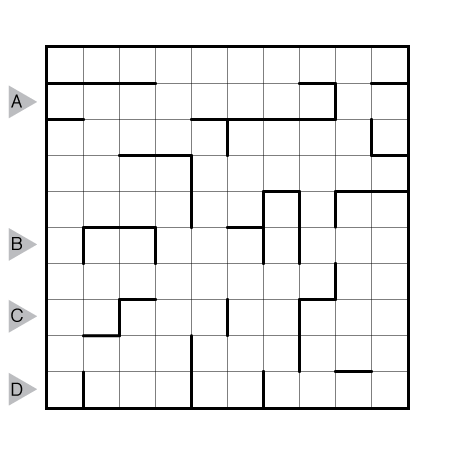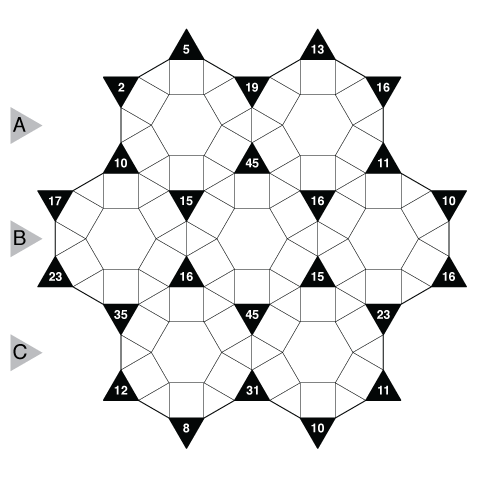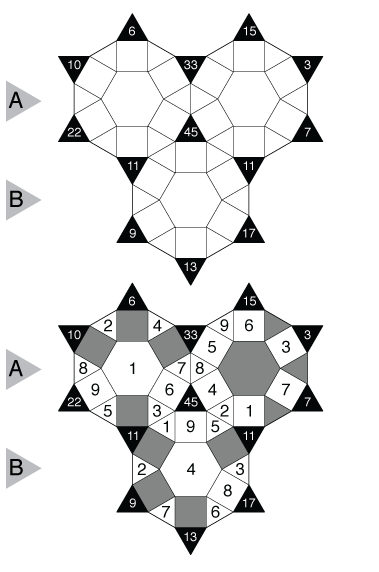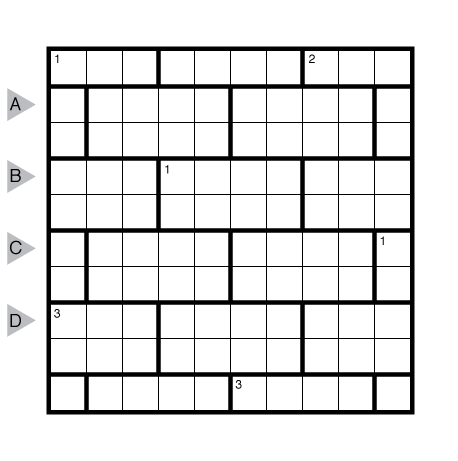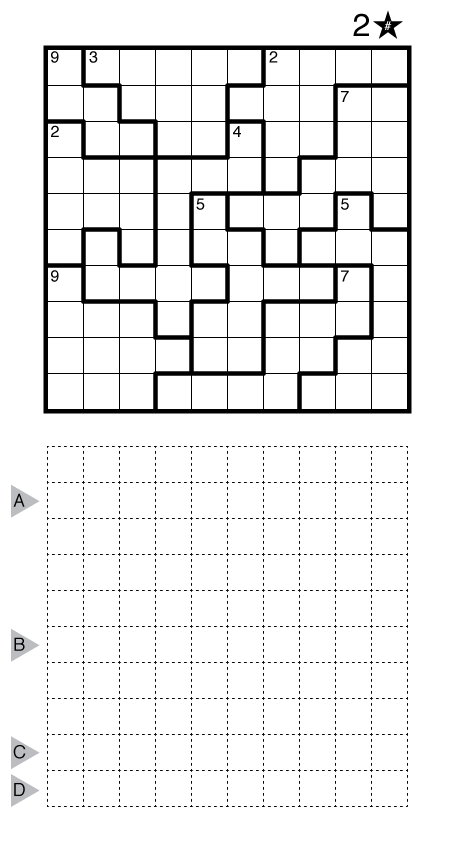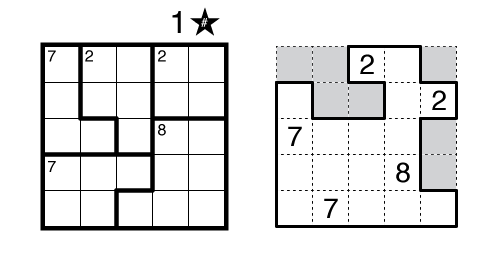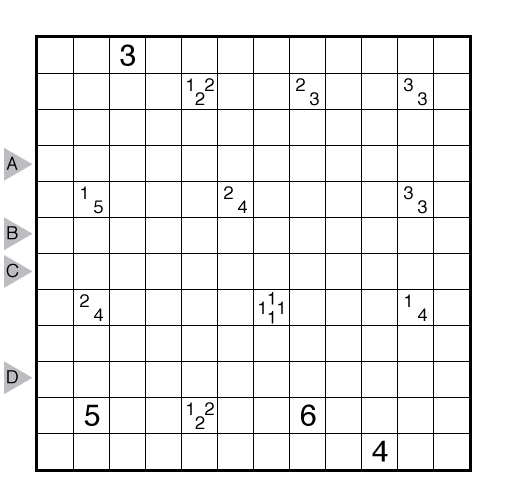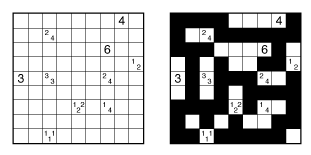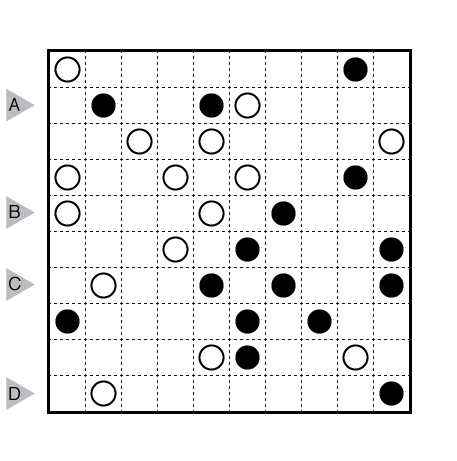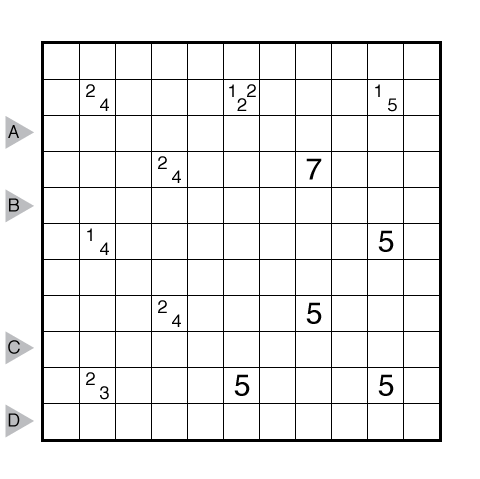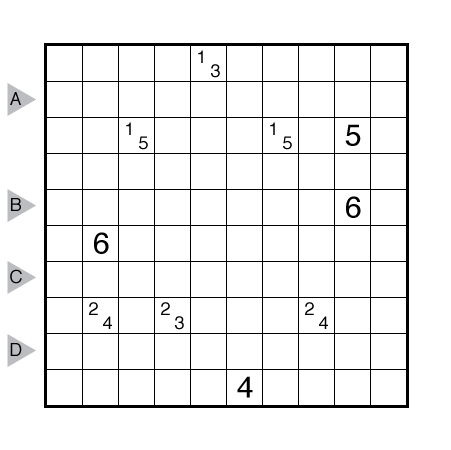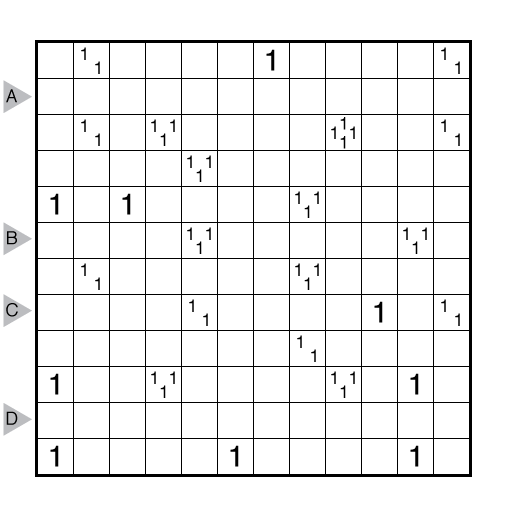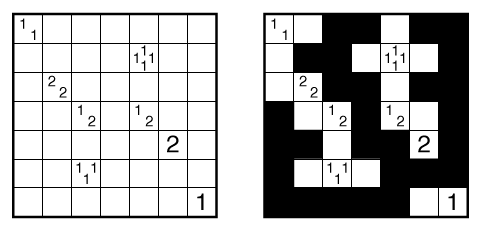SLICY by Thomas Snyder
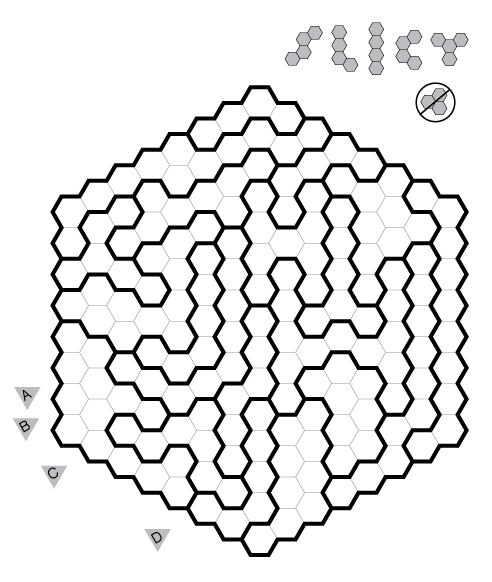
or solve online (using our beta test of Penpa-Edit tools)
Theme: JH (for Jamie Hargrove)
Author/Opus: This is the 263rd puzzle from Thomas Snyder, aka Dr. Sudoku.
Rules: Variation of LITS. Shade exactly four cells in each outlined region to form an S, L, I, C, or Y tetrahex. When all regions have been shaded, the following conditions must be true:
1) All shaded cells will be connected through a network of adjacent shaded cells;
2) No three shaded cells will share a common vertex;
3) When two tetrahexes share an edge in adjacent regions, they must not be the same type (S, L, I, C, or Y), regardless of potential rotations or reflections.
Answer String: Enter the length in cells of each of the shaded segments from lower left to upper right for the marked rows. Separate each row’s entry from the next with a comma.
Time Standards (highlight to view): Grandmaster = 4:45, Master = 8:00, Expert = 16:00
Solution: PDF
Note: Follow this link for more variations of LITS and this link for classic LITS. If you are new to this puzzle type, here are our easiest LITS to get started on. More LITS puzzles can be found in LOTS O’ LITS by Grant Fikes and Prasanna Seshadri.

